What is a Language Disorder?
A language disorder can cause issues with the comprehension and/or use of spoken, written, and other forms of language. Students with a language disorder may struggle with the form, content, or function of language.1
- 6-8 million People in the U.S. have some form of language impairment3
- 3.3% Of U.S. children ages 3-17 have a language disorder2
- 3 Types of language disorders have been identified1
EARLY SIGNS OF A language disorder
- Smaller vocabulary than other students of the same age4
- Uses limited sentence structure or struggles to put words together to form a sentence4
- Trouble describing a topic or series of events4
- Unable to follow instructions or ask and answer questions5
- May appear detached from others at school or home5
- Doesn’t show appropriate emotions, such as laughing at jokes5
three types of language disorders
There are three different types of language disorders, each with its own set of symptoms. An individual may have more than one type of language disorder.
1. FORMS OF LANGUAGE
Student struggles with:
- Phonology, or speech sounds and patterns5
- Morphology, or how words are formed5
- Syntax, or the formation of phrases and clauses5
2. CONTENT OF LANGUAGE
Student struggles with:
- Semantics, or the meaning of words5
3. FUNCTION OF LANGUAGE
Student struggles with:
- Pragmatics, or how language is used in different contexts5
What to Do if You Notice Signs of a Language Disorder
Take Notes
If you notice issues with your child’s ability to listen or speak, make note of the specific problems. The more information you can bring to a specialist, the better.
Talk to Your Child’s Teacher
With your list of observations in hand, schedule a conversation with your child’s teacher. Ask whether he or she has noticed similar behaviors, and whether these issues are affecting your child’s performance in school.
Request an Evaluation
You can talk to your child’s school about getting his or her language and comprehension skills measured by a speech-language pathologist or school psychologist. Both expressive and receptive abilities should be evaluated to determine whether a language disorder is present.4
Be Proactive and Trust Your Gut
You know your child best — so if you think he or she may have issues with language comprehension or use, it’s important to take the next steps toward an evaluation.
What to Do if Your Child is Diagnosed with a Language Disorder
Find a Specialist
If your child has been diagnosed with a language disorder, you’ll need a team of experts that includes a speech-language pathologist, audiologist, and specially trained teachers. Find a specialist with full certification and ongoing training in language disorders.5
Request Classroom Accommodations
Simple accommodations can improve your child’s understanding and use of language. Ask your child’s teacher to:
- Give simple, direct instructions5
- Talk, read, and play with your child one-on-one, but also encourage him or her to interact with other children5
- Ask your child to repeat the instructions given5
Create an Individualized Education Plan
Talk with your child’s teacher and school administrators about creating an Individualized Education Plan (IEP). This document will list out your child’s specific challenges and provide recommended classroom goals and accommodations. Ask to be involved in the creation of the document, and be sure to take home a copy for your records.
Common Language Disorder Myths
Myth:A child with a language disorder will have both expressive and receptive issues.
Fact:Language disorders don’t necessarily have to include both expressive and receptive issues. For example, a student may have expressive language impairments, but show no receptive language issues at all.4
Myth:Language and speech disorders are the same thing.
Fact:While language disorders cause impairments in the ability to receive, send, process, and comprehend language, speech disorders create issues with the articulation and fluency of speech sounds.5
Myth:Children with language disorders aren’t smart.
Fact:Language disorders affect individuals across the IQ continuum. Many students with language issues are intelligent, creative, and driven.6
Myth:Children will outgrow language disorders.
Fact:Some children are simply slower to develop language skills, but for others, language issues are not something that will fade with time. The only way to determine whether your child needs a language intervention is to get him or her tested for a language disorder.6
Myth:Speech therapy is only for students who have noticeable speech issues such as stuttering or lisps.
Fact:In addition to stuttering and other speech problems, speech therapists can help with the expressive and receptive issues associated with language disorders.6
Additional Resources on Language Disorders
Shop through AmazonSmile and Amazon will donate 0.5% of your purchase to Churchill.

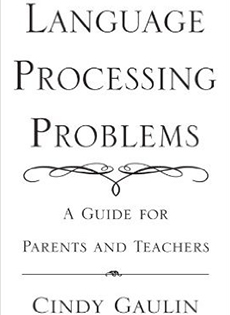
Language Processing Problems: A Guide for Parents and Teachers
Cindy Gaulin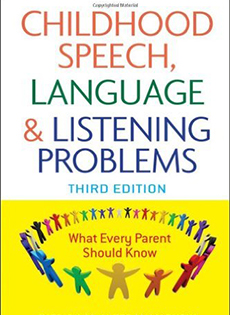
Childhood Speech, Language, and Listening Problems: What Every Parent Should Know
Patricia McAleer Hamaguchi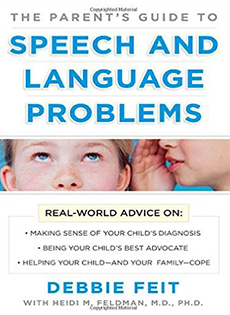
The Parent’s Guide to Speech and Language Problems
Debbie Feit with Heidi Feldman, MD, PhD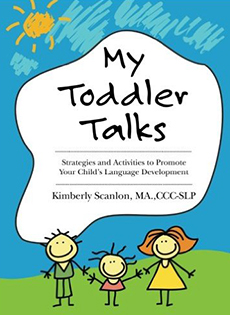
My Toddler Talks: Strategies and Activities to Promote Your Child’s Language Development
Kimberly Scanlon, MA, CCC-SLP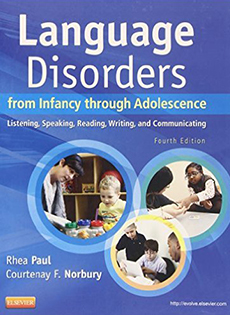
Language Disorders from Infancy through Adolescence: Listening, Speaking, Reading, Writing, and Communicating
Rhea Paul, PhD, CCC-SLP and Courtenay Norbury, PhD
References
- Definitions of Communication Disorders and Variations. American Speech-Language-Hearing-Association. Retrieved from http://www.asha.org/policy/RP1993-00208/
- Quick Statistics About Voice, Speech, Language. National Institute on Deafness and Other Communication Disorders (NIDCD). Retrieved from https://www.nidcd.nih.gov/health/statistics/quick-statistics-voice-speech-language
- Statistics on Voice, Speech, and Language. Retrieved from https://www.nidcd.nih.gov/health/statistics/statistics-voice-speech-and-language
- Language Disorder | Psych Central. National Institute on Deafness and Other Communication Disorders (NIDCD). Retrieved from http://psychcentral.com/disorders/language-disorder/
- Language Disorder DSM-5 315.39 (F80.9). Theravive. Retrieved from http://www.theravive.com/therapedia/Language-Disorder-DSM–5-315.39-(F80.9)
- Myths About Language Disorders. ADDitude Magazine. Retrieved from http://www.additudemag.com/slideshow/207/